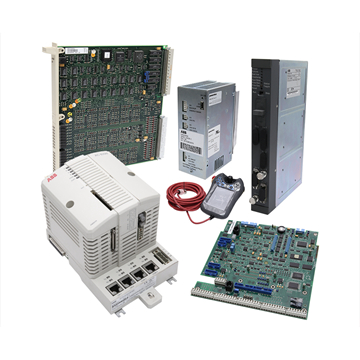Unlocking the Secrets of PLC Spare Parts: Essential Insights for Every Technician!
In the realm of industrial automation, Programmable Logic Controllers (PLCs) play a pivotal role in streamlining processes and enhancing efficiency. These sophisticated devices control machinery and processes across various sectors, ensuring that operations run smoothly and reliably. However, like any piece of technology, PLCs require maintenance, and this is where PLC spare parts come into play. PLC spare parts are essential components that ensure the continued functionality of these systems, allowing for quick repairs and minimal downtime. In this article, we will delve into the world of PLC spare parts, exploring what they are, their functions, and guidance on when they should be replaced. Whether you’re a seasoned technician or just starting your journey in industrial automation, understanding these components is crucial for keeping systems operational.

Understanding PLC Spare Parts
PLC spare parts encompass a variety of components critical for the operation of a PLC system. Among the most common types are Central Processing Units (CPUs), Input/Output (I/O) modules, power supplies, and communication modules. The CPU acts as the brain of the PLC, executing control commands and processing input data. I/O modules serve as the interface between the PLC and the machinery, translating signals from the physical world into data the PLC can understand, and vice versa. Power supplies are essential for providing the necessary voltage and current to the PLC, while communication modules enable data exchange between the PLC and other devices or networks. Each of these parts plays a vital role in ensuring the overall functionality and reliability of the PLC system, making it indispensable to understand their importance in maintenance and repairs.
Functions of PLC Spare Parts
The specific functions of PLC spare parts are numerous and critical for the seamless operation of automated systems. For instance, the CPU not only processes commands but also manages the timing and sequencing of operations within the system. Meanwhile, I/O modules facilitate the input of data from sensors and the output to actuators, which directly influence machinery performance. If an I/O module malfunctions, it may lead to incorrect data being sent to the PLC, causing erratic machine behavior. Similarly, a failing power supply can result in inadequate power delivery, leading to system shutdowns. Communication modules are also vital; they ensure that the PLC can communicate with other systems, and a failure here can isolate the PLC, leading to inefficiencies. Understanding these functions highlights why regular maintenance and timely replacement of spare parts are crucial for maintaining system integrity and performance.
When to Replace PLC Spare Parts
Recognizing when to replace PLC spare parts is vital for maintaining optimal performance. Various signs may indicate that a part is wearing out or has failed. Common indicators include persistent error messages on the PLC display, noticeable drops in performance, or physical signs of damage such as burnt-out components or frayed wires. For instance, a friend of mine, who works as a technician, once encountered a scenario where frequent error messages were overlooked. Eventually, they discovered that a failing CPU was the culprit, leading to significant downtime. Regular maintenance practices, such as visual inspections and systematic testing, can help technicians identify these issues before they escalate. Additionally, adhering to a replacement schedule based on the manufacturer's recommendations can prolong the lifespan of spare parts and enhance overall system reliability.
Best Practices for Managing PLC Spare Parts
Effective management of PLC spare parts is essential for minimizing downtime and ensuring that repairs can be conducted swiftly. A well-organized spare parts inventory allows technicians to track usage, maintain adequate stock levels, and ensure that quality parts are readily available. Implementing a tracking system can help you monitor which parts are frequently used and which ones might need to be replenished. Moreover, keeping meticulous records of part performance and replacement cycles can inform future purchasing decisions. It’s also prudent to source quality parts from reputable suppliers to avoid the pitfalls of subpar replacements. Lastly, establishing a proactive maintenance schedule can prevent emergencies, allowing for timely replacements rather than last-minute scrambles.
Key Takeaways on Managing PLC Spare Parts
In conclusion, understanding PLC spare parts is critical for technicians who wish to maintain efficient operations in industrial settings. From knowing the various types of parts and their specific functions to recognizing signs of wear and ensuring effective inventory management, these insights can significantly impact system reliability. By staying informed about best practices for managing spare parts and implementing a proactive maintenance strategy, technicians can not only prolong the lifespan of their PLC systems but also enhance overall operational efficiency. Embracing this knowledge will empower professionals to navigate the complexities of industrial automation with confidence and skill.








commentaires